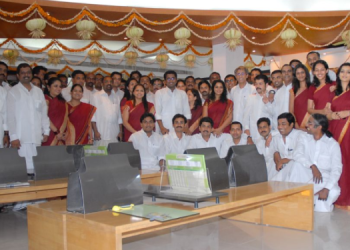After spending over a decade in the real estate industry, when Smitha Jacob decided to start a venture of her own, many business ideas came during the brainstorming sessions. It was during one of those sessions that the Co-founder sensed the need for affordable activewear with comfort, function and style. Jacob found a big gap between premium luxury brands to normal polyester/cotton wears. Hence with a mission to provide economical and sustainable activewear, Jolger was launched in 2021.
“If you take the Indian apparel industry, less than 10 pc are sports and activewear rest 90 pc includes ethnic, formal wear etc. But compared to other segments, the former category grows at a fast pace. We decided to enter into the sports and activewear category. I was fortunate enough to have a family friend who owns a factory in Jordan which manufactures activewear apparels for all leading brands. Hence, we were able to maintain the same quality similar to the major brands in terms of design quality, fabric, and stitches,” says Jacob.
Jacob wanted to create more employment opportunities for women and bringing in demographic shift.
“70 pc of our workforce are women and the corporate office has 80 pc women employees. We are committed to sharing a portion of our profits with women-led rural enterprises and skill-building ventures and 1 pc of our sales goes to OBLF, an NGO who works for the same,” she adds.
As the pandemic restrictions were lifted and things were back to normal, Jacob understood that there was a shift in the purchase behaviour from online to offline stores which led to the opening of the first offline outlet of Jolger’s in Bangalore.
“As the brand was born during the pandemic, we faced several issues with travel restrictions enforced. As the factory was located at Jordan, we couldn’t travel there and have faced roadblocks in terms of finalising designs and other things. By the time the brand was launched, the second wave of the pandemic came and we had to shut down operations, the same was repeated during the third wave,” she notes.
Jolger is planning to open one offline outlet every three months.
“We have currently opened one in Bengaluru and intend to open two more soon, post that we will move to cities like Chennai, Hyderabad, and Mumbai. After that we will focus on opening stores in North India. We are also exploring options to be present in MBOs. We are getting franchise requests which we are contemplating on the same,” Jacob adds.
“The brand is positioned in the premium segment. We tried sourcing the products from India to beat the price point. Later it was decided that quality matters; there will be a set of consumers who wouldn’t be able to understand the difference of any normal activewear and high-quality products. There are small nuances which we take care, the machine used, the thread which goes into the stitching process, knitting technology – all these are of high quality which differentiates a premium product when compared to a normal product. Though, our products are coming out the same factory which manufactures top activewear brands, we have kept the pricing affordable with men’s T-shirt price point starting at Rs.1,290 and women’s at Rs.1,380.The sales split between metro vs tier 2, 3 would be 55:45,” she explains.
Jacob defines the core TG of Jolger as anyone who wants to run an active life.
“If you consider age group, then people from the age group of 15 to 50 years. Going by the income slab, anyone whose annual salary is Rs.10 lakh per annum is our target group. Currently, the men’s category contributes 65 pc of the business and rest by the women’s category. We have taken care of many aspects in the product design. We have wraparound tops where the tops stay intact where customers can perform yoga easily. We have come up with shorts for men which has tights inside so the muscles are held tight which helps in stretching activities, running etc,” Jacob reveals.
The largest selling product for the brand is women’s zipper jacket, second largest selling product is men’s basic T-shirt.
“The brand has an initiative called #MovetowardsGreen – there are two aspects of this. One is the back-end process or how the manufacturing is happening. We are ensuring sustainability during the whole procedure like reducing the carbon footprint from the factory side. The next is on the product side, in our next line of product collection – 50 pc of the products will be recycled ones. The products which are in sale currently are directly made of the plastic waste which is collected and converted into T-shirts,” she adds.
“In terms of marketing, the brand is engaging influencers at the micro and macro level. We are working on the omnichannel strategy for the brand, where three years down the lane, we are planning to achieve 60 pc sales numbers from offline stores and 40 pc from online channels like D2C website and market places,” Jacob concludes.

















